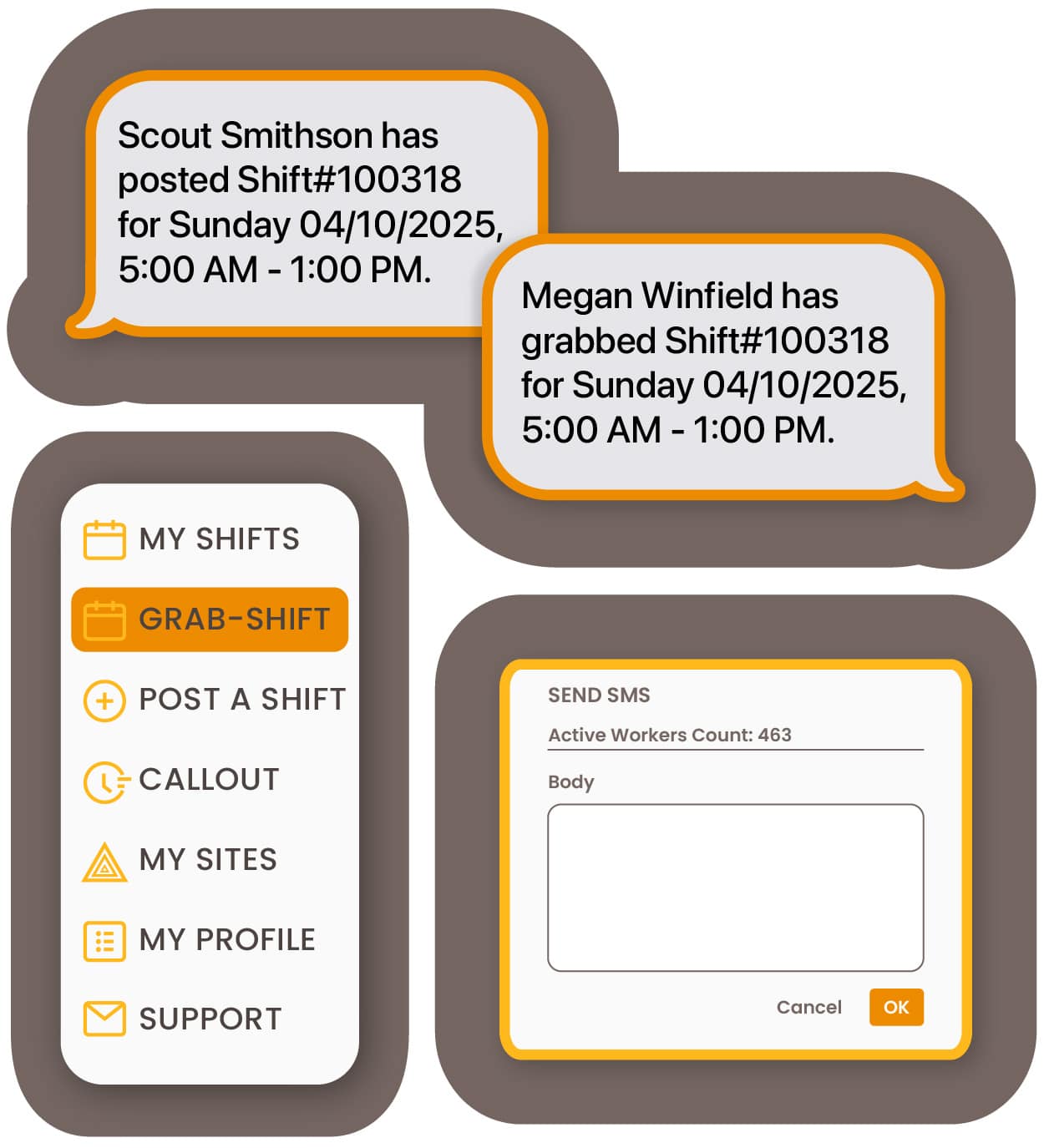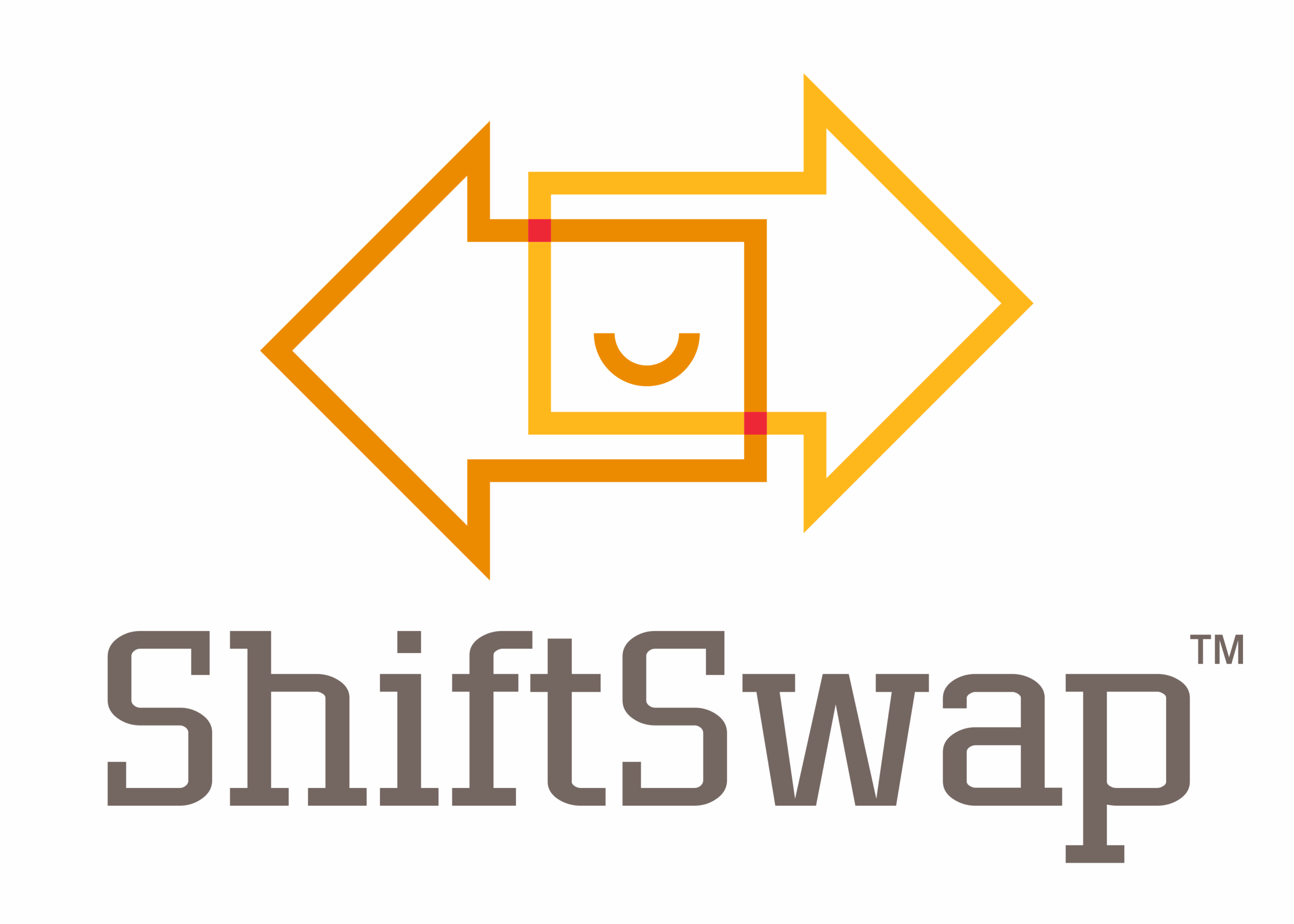ShiftSwap vs ADP
ADP is a global leader in payroll and HR software, but when it comes to shift coverage, labor optimization, and employee engagement, ShiftSwap takes the lead. Both platforms support business efficiency, but they serve different sides of workforce management.

Key Differences
Focus & Functionality
ADP specializes in payroll, tax compliance, and HR administration.
ShiftSwap, on the other hand, focuses on shift management, coverage visibility, and employee engagement; helping frontline managers reduce labor costs while empowering workers with flexibility.
Pricing & Accessibility
ADP’s pricing varies by team size and additional modules, with costs increasing as you add workforce management features.
ShiftSwap offers all-inclusive pricing with unlimited shift postings, notifications, and admin controls at a flat rate pricing; no hidden costs.
Flexible, Employee-Led Shift Coverage
ADP offers traditional scheduling and time tracking but lacks employee-led shift features, limiting flexibility and responsiveness for hourly teams.
ShiftSwap allows employees to lead the shift coverage process by volunteering to grab shifts posted by coworkers and leadership, while management retains full approval control.
Scalability for Hourly Teams
ADP scales best for corporate HR teams and payroll processing, but its shift management capabilities are limited.
ShiftSwap workers for operations at any scale–warehouses, distribution centers, retail–with 50+ employees per location.

How They Work Together
While ADP manages what happens after the work is done, ShiftSwap manages how the work gets done. ShiftSwap doesn’t replace ADP; it complements it. Many organizations use ADP for payroll and ShiftSwap for shift operations, integrating both for efficient workforce management control.
ADP and ShiftSwap can operate seamlessly in tandem, creating a full workforce management ecosystem from scheduling to payroll.
- Streamlined Data Flow: ShiftSwap manages shift coverages, Voluntary Time-Off (VTO), overtime, and other partial/full shift postings. ADP processes those hours accurately for payroll and compliance.
- Operational & Administrative Alignment: ShiftSwap ensures the right workers are scheduled, while ADP ensures they’re paid correctly.
- Improves Employee Experience: When used together, employees get flexible shift options and reliable payroll, creating higher job satisfaction and engagement.
- Visibility Across the Workforce: Supervisors gain shift control, while HR maintains accurate records in ADP; all without double entry or miscommunication.
measurable operational improvements
Performance Comparisons
Go-Live Time
ShiftSwap: Ready in as little as 48 hours, with hands-on implementation support and quick training.
ADP: 4-12 weeks, depending on the scope of HR, payroll, and compliance setup.
Turnover Reduction
ShiftSwap: Customers have reported up to a 70% decrease in turnover within 3 months due to flexible shift management and communication.
ADP: No publish turnover impact data; focuses primarily on HR recordkeeping and compliance metrics.
Absenteeism Improvement
ShiftSwap: Organizations see 10-20% improvement, thanks to automated shift coverage and immediate replacement alerts.
ADP: Does not provide real-time coverage or attendance improvement tools beyond tracking attendance data.
Labor Cost Reduction
ShiftSwap: Helps sites save 6-figures in labor costs by reducing overtime and aligning labor with demand.
ADP: Provides visibility into payroll spending but lacks dynamic scheduling tools that directly lower costs.
Employee Engagement
ShiftSwap: Improve engagement by 7% or more (Gallup Q12) within one year, as workers gain autonomy over their schedules and coverage decisions.
ADP: Offers employee surveys and feedback tools, but does not provide operational control at the shift level.
Alerts & Notifications
ShiftSwap: Includes unlimited SMS and email notifications for shift coverage, approvals, and shift postings; keeping leaders and employees instantly informed.
ADP: Sends alerts via its internal system but lacks direct employee-led notification tools.
- You manage hourly teams that need real-time flexibility and quick shift coverage.
- You want fast implementation with instant, measurable operational impact.
- You’re looking to reduce labor costs and turnover through innovative shift management features.
- Your primary need is payroll and HR management rather than shift based operations.
- You want a comprehensive system for tax, benefits, and compliance tracking.
- You manage a mixed workforce with a larger focus on salaried employees.
ShiftSwap eliminates hidden fees with a flat-rate pricing model that scales with your operation.
Every plan includes:
- Unlimited Shift Posts
- SMS & Email Alerts
- Multilingual Options
- 24/7 Support
- No Hidden Fees
- Guided Onboarding
Once you’re live, your site will get access to training material, on-call support, and ongoing project updates.
keep exploring
Discover Why Operations Trust ShiftSwap
workforce management insights
Articles & Resources
Choosing the Right Labor Management Platform for Employee Satisfaction
Selecting the right labor management platform is one of the most impactful decisions…
Most Reliable Shift Management Platforms for Large Enterprises
Large enterprises face unique challenges in scheduling, coverage, and employee retention. That’s why…
Top Workforce Management Softwares for Real-Time Shift Coverage
Workforce management tools are essential for streamlining operations, optimizing labor costs, and keeping…
FAQs
shiftswap vs adp
How does ShiftSwap differ from ADP Workforce Now or ADP Scheduling?
ADP provides comprehensive HR, payroll, and compliance tools, but its scheduling capabilities are limited. ShiftSwap focuses solely on real-time shift management, employee-led coverage, and workforce flexibility, offering a more agile approach to daily operations while complementing ADP’s administrative functions.
Can ShiftSwap integrate with ADP’s payroll system?
Yes. Many organizations use ShiftSwap alongside ADP to create a seamless workforce ecosystem. ADP manages payroll and compliance, while ShiftSwap handles shift management, coverage, and communication, allowing data from both to align for more accurate labor reporting.
Which is better for preventing absenteeism, ShiftSwap or ADP?
ShiftSwap includes tools like call-out postings, voluntary time-off (VTO) postings, overtime (OT) postings, and instant notifications, reducing absenteeism and last-minute call-outs. All eligible workers get immediate alerts, so they can grab open shifts quickly, making finding shift coverage efficient. ADP tracks attendance well, but doesn’t provide the same proactive coverage management tools.
Does ShiftSwap offer faster deployment than ADP?
Yes. ShiftSwap’s go-live time is as short as 48 hours, compared to ADP’s multi-week implementation cycle for new systems and modules. The quickness allows ShiftSwap users to experience immediate shift management gains.
Which platform, ShiftSwap or ADP, helps reduce labor costs more efficiently?
ShiftSwap dynamically adjusts labor distribution, helping employers cut overtime and align staffing with demand. While ADP offers robust reporting, its cost savings depend on manual adjustments rather than automated shift management tools.
How does ShiftSwap improve employee morale compared to ADP?
ShiftSwap gives employees more ownership over their schedules, which promotes trust and flexibility; two factors proven to improve morale and retention in the workplace. ADP’s tools are more HR-focused and don’t directly improve employee engagement through daily scheduling experiences.
Should large organizations use ShiftSwap or ADP for workforce flexibility?
Both have their place: ADP for HR management, and ShiftSwap for operational shift management. Together, they form a comprehensive system that handles both payroll accuracy and real-time workforce optimization.



